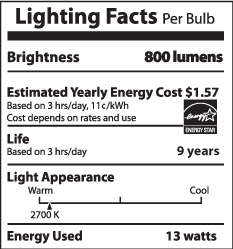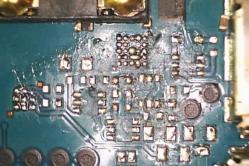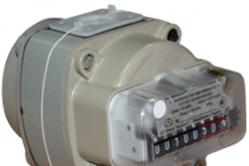Antipyretics for children are prescribed by a pediatrician. But there are situations of emergency care for fever, when the child needs to give the medicine immediately. Then the parents take responsibility and apply antipyretic drugs. What is allowed to give to infants? How can you bring down the temperature in older children? Which medications are the safest?
When choosing an LED lamp, pay attention to the lumens to make sure you have the right amount of light.
Usually we buy things based on the quantity that we need, right? When we buy milk, we buy it in liters. Then why should it be different with light? For decades we bought light bulbs, guided by how much energy they consume (watts) - and not paying attention to how much light they give us (lumens).
Lumen shows how much light you get from a light bulb. The more lumens, the brighter the light. A smaller number of lumens gives less light.
But the brightness and the number of lumens can vary greatly, so there is a certain way of calculating suitable characteristics.
Practical method of calculation:
- to replace a 100-watt bulb, look for lED light bulb, which will give 1100 lumens;
- 75-watt lamp - about 750 lumens;
- 60-watt lamp - about 550 lumens;
- 40-watt lamp - about 200 lumens.
If you need something less bright, purchase lED lamp with fewer lumens.
Lighting efficiency:
But we must not forget that Lumen is a complete light flux from a source. However, this measurement usually does not take into account the focusing efficiency of the reflector or lens and therefore is not a direct parameter to estimate the luminance or useful performance of the luminaire beam. A wide beam of light can have the same lumens index as a narrow-beam one. Lumens can not be used to determine the intensity of a beam, because the lumen score includes all the scattered and useless light.
Lux is a unit of measurement of illumination.
So for example 1 Lux is equal to the illumination of a surface area of 1 m², with a light flux of radiation incident on it, equal to 1 lumen. If we collect 100 lumens and project them onto an area of 1 m ², then the illumination of this area will be 100 lux. If the same 100 lumens are sent to 10 m², then the illumination is 10 lux.
 Label for LED lamps:
Label for LED lamps:
What should be on the packaging when you buy LED lighting devices?
To help consumers better understand the transition from watts to lumens, the Federal Trade Commission proposed a new label for lED Light Bulbs. Such a label will help people buy light bulbs that are suitable for them.
Just like food labels, the label for lighting devices will help consumers understand what they are really buying. The label clearly indicates: light flux, bulb type, price, estimated service cost for the year and the color of the glow from warm white (with a yellowish tinge) to cold white to cold (with a blue tint).
Very often consumers confuse lumens and suites. These values are units of measurement light flux and illumination. The electric power of a lamp is measured in watts, and the light flux ("light power") is in lumens (Lm). The more lumens, the more light a lamp gives.
The light flux characterizes the light source, and the illumination is the surface onto which light falls. Illuminance is measured in lux (Lk). A light source with a light flux of 1 Lm, uniformly illuminating a surface of 1 square meter, creates an illumination of 1 Lx on it. That is, Lux is the ratio of the number of lumens and the illuminated area and
1 lux = 1 lumen per square meter.
Ratio of Watts and Lumens in lamps of different types
Information on the number of lumens can usually be found on the lamps themselves, but on incandescent lamps, for example, this information is not always available. This table will help you transfer Lumens to Watts for halogen, fluorescent, mercury lamps and incandescent lamps, depending on their power.

This part will very briefly tell you about the basic concepts that those flower growers who are trying to figure out a huge variety of lamps for lighting plants.
Basic concepts
Lumens and suites are often confused. These values are units of measurement of luminous flux and illumination, which must be distinguished.
The electric power of the lamp is measured in watts, and light flow ("light power") - in lumens (Lm). The more lumens, the more light a lamp gives. Analogy with a hose for watering plants - the more the faucet is opened, the "wetter" will be all around.
The luminous flux characterizes the light source, and illumination - surface on which light falls. By analogy with the hose - you need to know how much water gets to this or that point. This will determine how long you need to water the plants in the garden.
Illuminance is measured in lux (Lk). A light source with a light flux of 1 Lm, uniformly illuminating a surface of 1 square meter, creates an illumination of 1 Lx on it.
Useful rules
Illumination at the surface is inversely proportional to the square of the distance from the lamp to the surface. If you moved the lamp that hung above the plants at a height of half a meter, to a height of one meter from the plants, thus increasing the distance between them twice - then the illumination of the plants would decrease fourfold. This should be remembered when you design a system for lighting plants.
Illuminance on the surface depends on the magnitude of the angle under which this surface is illuminated. For example: the sun in the summer noon, being high in the sky, creates on the surface of the earth an illumination several times greater than the sun, hanging low over the horizon on a winter day. If you use a searchlight to illuminate plants, try to make the light point perpendicular to the plants.
Spectrum and color
The color of the radiation lamp is characterized color temperature (CCT - Correlated Color Temperature). This is based on the principle that if you heat, for example, a piece of metal, then its color changes from red-orange to blue. The temperature of the heated metal, at which its color is closest to the color of the lamp, is called the color temperature of the lamp. It is measured in degrees Kelvin.
Another parameter of the lamp is color rendering ratio (CRI - color rendering index). This parameter shows how close the colors of the illuminated objects to the true colors. This value has a value from zero to one hundred. For example, sodium lamps have a low color rendition: all objects under them appear to be the same color. New models of fluorescent lamps have a high CRI. Try to use lamps with a high CRI value to make your plants look more attractive. These two parameters are usually indicated on the labeling fluorescent lamps. For example, / 735 - means a lamp with a CRI value of 70-75, CCT = 3500K - a heat-white lamp, / 960 - a lamp with CRI = 90, CCT = 6000K - a fluorescent lamp.
|
Lamp |
Colour |
|
| 2000 | Low pressure sodium lamp (used for street lighting), CRI<10 | Orange - sunrise-sunset |
| 2500 | High-pressure sodium uncoated lamp (DNaT), CRI = 20-25 | Yellow |
| 3000-3500 | Incandescent lamp, CRI = 100, CCT = 3000K Fluorescent lamp of warm white color (warm-white), CRI = 70-80 Halogen filament lamp, CRI = 100, SST = 3500K |
White |
| 4000-4500 | Cool fluorescent lamp (cool-white), CRI = 70-90 Metalloidal lamp (metal-halide), CRI = 70 |
Cold white |
| 5000 | Mercury lamp coated, CRI = 30-50 | Light blue - midday sky |
| 6000-6500 | Fluorescent fluorescent lamp (daylight), CRI = 70-90 Metal halide lamp (metal-halide), CRI = 70 Mercury lamp (CRT) CRI = 15 | The sky on a cloudy day |
As a result of the process of photosynthesis occurring in plants, the energy of light turns into energy used by the plant. In the process of photosynthesis, the plant absorbs carbon dioxide and emits oxygen. Light is absorbed by various pigments in the plant, mainly by chlorophyll. This pigment absorbs light in the blue and red areas of the spectrum. In addition to photosynthesis, there are other processes in plants, to which the light of different regions of the spectrum exerts its influence. By selecting the spectrum, alternating the duration of the light and dark periods, you can accelerate or slow down the development of the plant, shorten the growing season, etc.
For example, pigments with a peak of sensitivity in the red region of the spectrum are responsible for the development of the root system, the ripening of fruits, and the flowering of plants. To this end, sodium lamps are used in greenhouses, in which most of the radiation falls on the red region of the spectrum. Pigments with absorption peak in the blue region are responsible for leaf development, plant growth, etc. Plants that have grown with an insufficient amount of blue light (for example, under an incandescent lamp), higher - they stretch upward to get more "blue light". The pigment, which is responsible for the orientation of the plant to light, is also sensitive to blue rays.
This leads to an important conclusion: a lamp designed to illuminate plants must contain both red and blue colors.
Many manufacturers of fluorescent lamps offer lamps with a spectrum optimized for plants. They are better for plants than conventional fluorescent (used for indoor lighting). Such a lamp makes sense to buy, if you need to replace the old lamp: with the same power, a special lamp gives more "useful" light for plants. But if you are installing a new system for lighting plants, then do not pursue these specialized lamps, which are much more expensive than conventional ones. Install a more powerful lamp with a high color rendition (lamp marking is / 9 ..). In its spectrum there will be all the necessary components, and it will give much more light than a special lamp.
Every week, for 10 years, for 100,000 of our subscribers, an excellent selection of relevant materials about flowers and garden, as well as other useful information.
Subscribe and receive!
How many lumens in an incandescent lamp? what analogue of a 100 W incandescent lamp? how to determine the luminous flux of a lamp? how many lumens in a light bulb? what are the analogs of incandescent light bulbs? how many lumens in a 1 watt LED light bulb?
How many lumens are in the lamp?
How many lumens in an incandescent lamp?
For the average consumer it is always difficult to understand the technical innovations and their characteristics. So for LED lamps, very often ask the following questions:
- what analogue of a 100 W incandescent lamp?
- how to determine the luminous flux of a lamp?
- how many lumen in a light bulb?
- what are the analogs of incandescent light bulbs?
- how many lumen in 1W LED bulb?
Below is a table of the ratio Lm (Lumen) to W (Watt), for an incandescent lamp with respect to an LED lamp.
How many lumens in 1 W, in an LED light bulb?
Depending on the quality, the manufacturer and the voltage - light flow in LEDs varies from 80 to 150 lm from 1W. Increasing the voltage of the LED, the light flux also rises, but the temperature allocated to it also rises. To reduce the temperature, cooling is used in the form of various radiators and cooling systems.
What is lumen?
Lumenthis is the measure of the light flux of the light source.
How to determine "how many lumens" in your light bulb?
First of all, the light flux is indicated on the box or in the specifications for the product. You can also find a similar lamp from famous manufacturers and compare the characteristics with them.
If we want to determine ourselves, then we need to use the luxmeter and determine the illumination at each point of the room. Suite is the ratio of the number of lumens to the illuminated area (1 lux - 1 lumen per square meter). It is necessary to know what illumination the manufacturer declared for a separate LED lamp.
In practice, the main value is the indicator of illumination on the working surface measured in Lk (Lux). Moreover, the illumination of working surfaces and premises for various fields of activity must comply with the state standards specified in SNiP 23.05.2010
Norms of illumination of working surfaces for premises -
How many lumens are in the LEDs relative to other light sources?
Explanation of abbreviations:
LN - incandescent lamp,
GLN - halogen lamp,
LL - fluorescent lamp,
CFL is a compact fluorescent lamp,
MGL is a metal halide lamp.
DRL - high-pressure mercury discharge lamps.
Designed for general lighting of industrial premises and open spaces.
D - arc
Р - mercury
L - lamp
| Lamp Type | Power, W | Length, mm | Diameter, mm | Type of socle | Light flow |
| DRL 125 | 125 | 178 | 76 | E-27 | about 5500 |
| DRL 250 | 250 | 228 | 91 | E-40 | about 12,000 |
| DRL 400 | 400 | 292 | 122 | E-40 | about 20000 |
| DRL 700 | 700 | 357 | 152 | E-40 | about 40000 |
| DRL 1000 | 1000 | 411 | 167 | E-40 | about 55,000 |
With the use of DRL lamps in luminaires, the light output is reduced by losses at a re-reflection of up to 40%, depending on the housing of the luminaire and the diffuser used!



